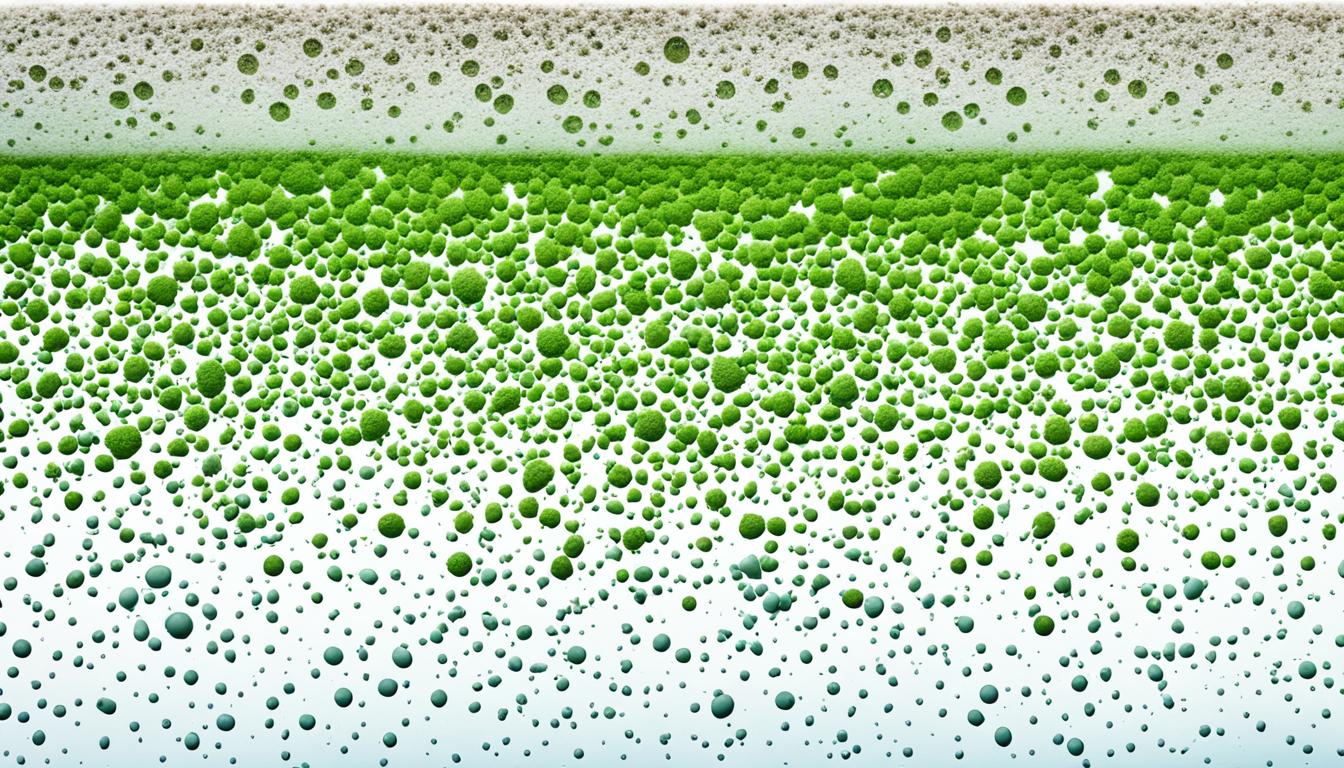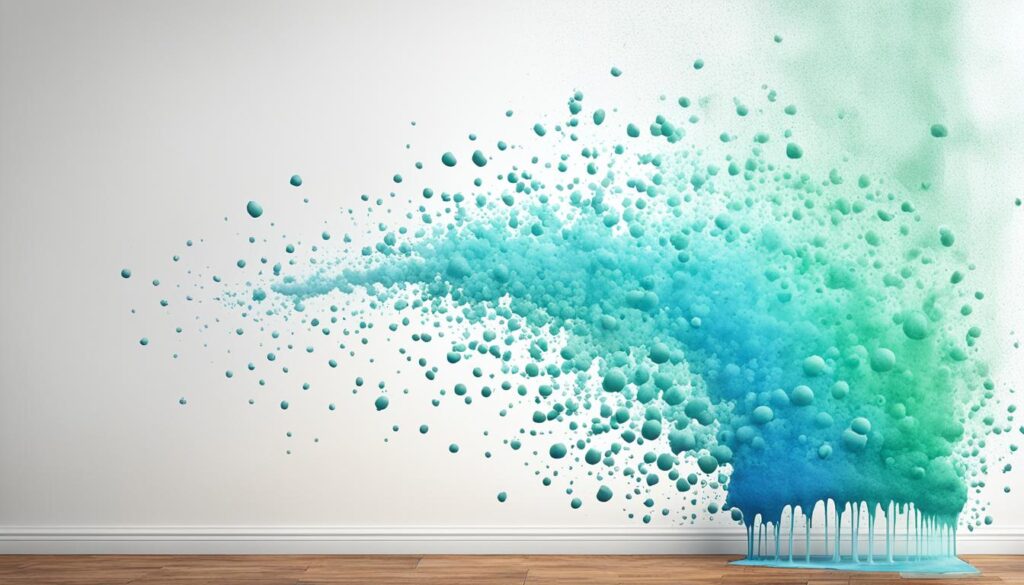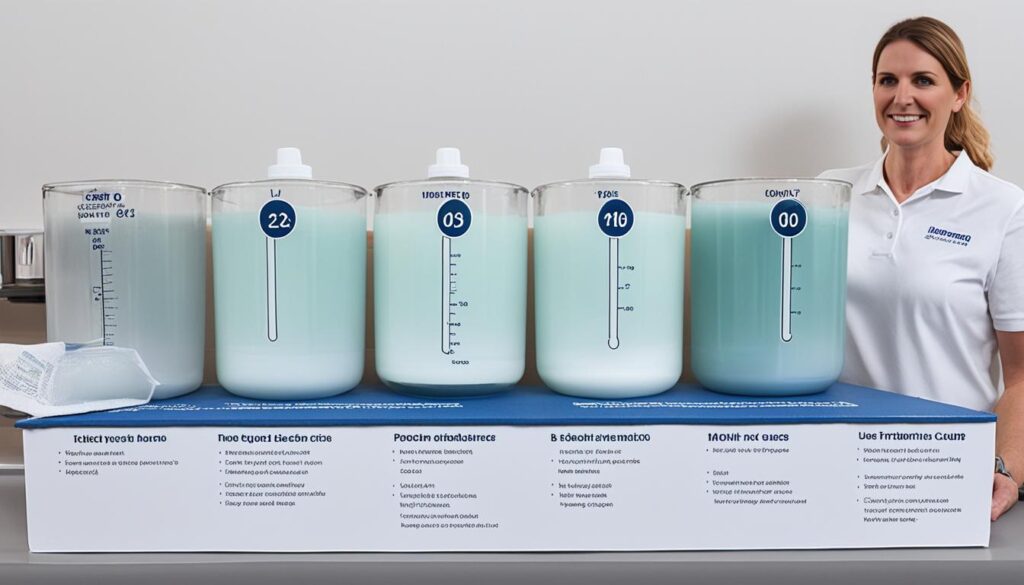
Innovative Techniques for bleach to water ratio for Mold
Welcome to our informative guide on innovative techniques for determining the optimal bleach to water ratio for mold removal. At [Your Company Name], we understand the importance of safe and effective cleaning when it comes to eliminating mold from your home or business. By using the correct bleach to water ratio, you can ensure a thorough and successful mold eradication process.
When dealing with mold, it is crucial to find the right balance between bleach and water. Using too much bleach can be harmful, while too little can be ineffective in killing and preventing the growth of mold. Our experts have extensive knowledge in this field and are here to provide you with expert guidance to achieve the ideal bleach to water ratio for mold removal.
Key Takeaways:
- Determining the optimal bleach to water ratio is essential for effective mold removal.
- Using too much bleach can be harmful, while too little may not be effective in eliminating mold.
- Our experts can guide you in finding the right bleach to water ratio for your specific mold removal needs.
- Safe and effective cleaning is crucial for promoting a healthier indoor environment.
- Contact [Your Company Name] at 305-465-6653 for a professional mold assessment and expert assistance.
Understanding the Importance of Bleach to Water Ratio
In the battle against mold, using the correct bleach to water ratio is essential for effective cleaning. A proper bleach to water ratio ensures that the cleaning solution has the necessary potency to kill and prevent mold growth, while also maintaining safety.
Mold is a common problem in homes and businesses, and it thrives in moist environments. When left untreated, mold can cause structural damage and pose health risks to occupants. That’s why it’s crucial to understand the significance of the bleach to water ratio in mold removal.
The bleach to water ratio determines the strength of the cleaning solution. Too little bleach may not effectively eliminate mold, while too much bleach can be harmful, especially if not properly diluted. Achieving the right balance is crucial for a successful cleaning outcome.
The Role of Bleach in Mold Removal
Bleach is widely recognized for its ability to kill mold and disinfect surfaces. It contains active ingredients, such as sodium hypochlorite, which have strong antimicrobial properties to combat mold and other fungi. Bleach works by altering the mold’s proteins, ultimately destroying its structure and preventing future growth.
However, bleach alone is not always sufficient for complete mold removal. Its effectiveness can be significantly enhanced when used alongside other cleaning methods and preventive measures, such as scrubbing, drying affected areas, and improving ventilation.
The Significance of the Bleach to Water Ratio
The bleach to water ratio determines the concentration of bleach in the cleaning solution. It is crucial to strike the right balance to ensure maximum efficacy and minimize potential risks. The recommended bleach to water ratio for mold removal is typically one part bleach to ten parts water.
Using a higher concentration of bleach may seem like a more effective approach, but it can actually be counterproductive. High concentrations of bleach can release toxic fumes, damage surfaces, and pose health hazards to humans and pets. Diluting bleach with water not only reduces these risks but also allows the bleach to penetrate porous materials more effectively.
On the other hand, using too little bleach can weaken the cleaning solution, rendering it ineffective in killing mold and preventing its resurgence. Achieving the optimal bleach to water ratio is vital for ensuring a balance between effectiveness and safety.

Finding the Optimal Bleach to Water Ratio for Mold Removal
In order to effectively eliminate mold, it is crucial to use the correct bleach to water ratio. By understanding the optimal ratio and following recommended guidelines, you can ensure safe and efficient mold removal. Here, we will provide you with expert guidance on determining the perfect ratio for your mold remediation needs.
Determining the Recommended Ratios
When it comes to mixing bleach and water for mold removal, there are several ratios that experts recommend. The most commonly recommended ratios are:
- 1:10 – This ratio is suitable for non-porous surfaces and areas with light mold infestations.
- 1:4 – This ratio is ideal for medium to heavy mold infestations on non-porous surfaces.
- 1:2 – This ratio is recommended for heavily infested porous surfaces.
It is important to note that these ratios are general guidelines, and the severity of the mold infestation, the type of surface, and the specific bleach used may require adjustments. Always follow the instructions provided by the bleach manufacturer for the best results.
Factors to Consider
When determining the optimal bleach to water ratio for mold removal, there are a few factors to consider:
- The Type of Surface: Porous surfaces, such as drywall or wood, may require a stronger bleach solution compared to non-porous surfaces like tile or glass.
- The Severity of the Mold Infestation: For heavily infested areas, a stronger bleach solution may be necessary to effectively eliminate the mold.
- Safety Precautions: It is essential to consider the safety precautions outlined by bleach manufacturers, as using higher bleach concentrations may pose health risks.
Expert Tips:
“Always wear protective gear, including gloves and a mask, when working with bleach. Make sure to ventilate the area properly to avoid inhaling fumes. Additionally, test the bleach solution on a small inconspicuous area before applying it to the entire surface, especially when dealing with sensitive materials.”
By carefully considering these factors and following the recommended ratios, you can determine the optimal bleach to water ratio for mold removal. This will ensure that your cleaning efforts are safe, effective, and successful in eliminating mold from your environment.

| Ratio | Suitable Surfaces | Mold Infestation Level |
|---|---|---|
| 1:10 | Non-porous surfaces | Light infestations |
| 1:4 | Non-porous surfaces | Medium to heavy infestations |
| 1:2 | Porous surfaces | Heavy infestations |
Conclusion
In conclusion, understanding the appropriate bleach to water ratio is crucial for effective mold removal and ensuring a safe and clean indoor environment. By following the innovative techniques and expert guidance provided in this article, you can confidently tackle mold problems in your home or business.
Remember, the bleach to water ratio plays a vital role in killing and preventing the growth of mold. Using the correct ratio will ensure that you achieve optimal results without compromising safety. It is recommended to consult with a professional mold remediation company, such as Fix Mold Miami, for expert guidance and assistance.
For a thorough mold assessment and reliable mold removal services, contact Fix Mold Miami at 305-465-6653. Their dedicated team of experts will help you determine the appropriate bleach to water ratio and provide effective solutions to eliminate mold and create a healthier indoor environment.




